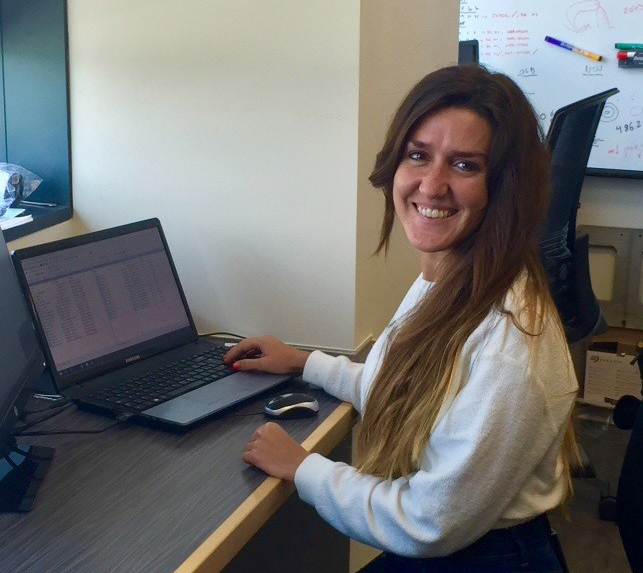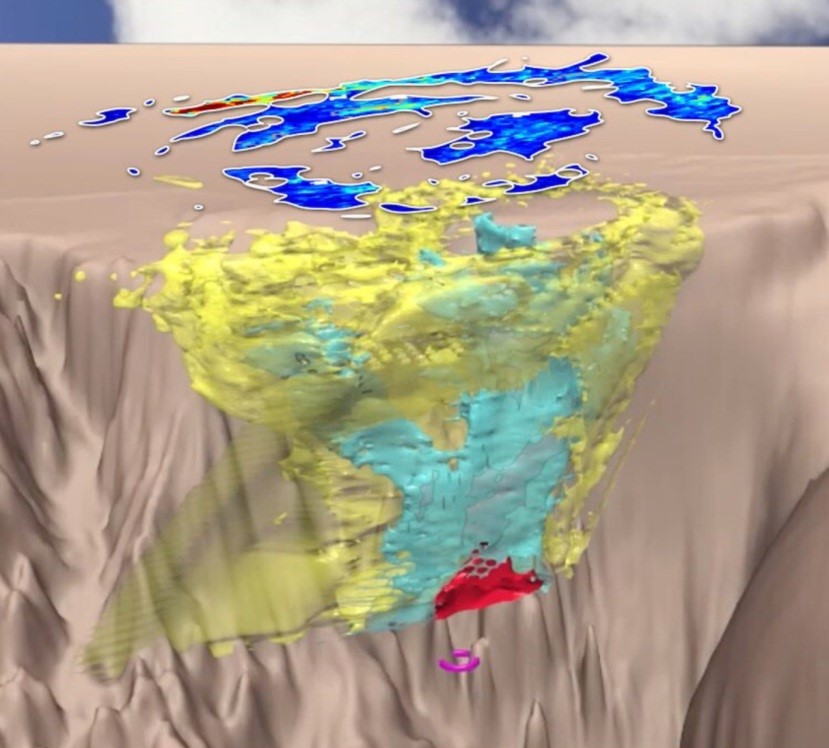
Marcia Trillo, Student of the Month, May 2016

Our Near-field and far-field modeling group is working to recreate oil spills under varying conditions. Applying strong currents and adding dispersants which changes droplet sizes in computer models can make predicting their eventual fate easier. Marcia Trillo, a M.S. student studying in Dr. Claire Paris’ lab, is helping answer questions about oi-water interactions.
Marcia is the C-IMAGE Student of the Month for May 2016. We asked her about her past studies and research for this month’s blog.
What is the focus of your research, how will your results contribute to improve understanding of oil spills? (What are your research questions?)
Our goal is to use visualization techniques to trace the evolution of oil plumes and optimize evaluation with observations. We use the CMS (Connectivity Modeling System), which is an oil spill application of the community modeling system, based on a stochastic, multi-scale Lagrangian framework developed by Dr. Claire Paris. The CMS uses the droplet size distribution and biodegradation rates from high pressure experiments as input, and its output is then tested against the data set collected during and post the Deepwater Horizon Event.
What path did you take to make it to where you are now? Bachelors degree, internship experience, working experience?
I enjoy studying math and physics, and I love nature and I thought that a Bachelor’s degree in Environmental Engineering was the best way to contribute to the conservation of our natural resources. I decided to study at the Pontificia Universidad Católica Argentina (Catholic University of Argentina) because it is the top environmental engineering school in my country. There are many prestigious researchers working there and I think that is essential to shape my professional career. Furthermore, I took a graduate course related to Mathematical and Physical Modeling of Transport in Water Bodies in the University of Buenos Aires and since then, I’ve been interested in contaminant plumes.
What initially interested you in developing models of oil spills at U Miami?
 I chose the University of Miami-Rosenstiel School of Marine and Atmospheric Science for my master’s degree because Fulbright gave me the opportunity to study in the United States, and I think this school is one of the best ones in the world regarding my field. Especially, Dr. Claire Paris (my advisor) has worked on the DWH oil spill since its onset through National Science Foundation Rapid Award and she is a renown scientist.
I chose the University of Miami-Rosenstiel School of Marine and Atmospheric Science for my master’s degree because Fulbright gave me the opportunity to study in the United States, and I think this school is one of the best ones in the world regarding my field. Especially, Dr. Claire Paris (my advisor) has worked on the DWH oil spill since its onset through National Science Foundation Rapid Award and she is a renown scientist.
What research tasks are you completing this week (or this month)?
Particularly this week, I have been using ArcGIS (Geographic Information Systems) and the BP data available to be able to interpolate the sampling locations and analyze the monthly spatial distribution and evolution of the oil concentration in the Gulf of Mexico before and after the wellhead was capped.
Which of your findings or research has been most eye-opening? Were there any moments or facts that just made you say “Wow! I did not expect that.”?
While analyzing the water chemistry sampling locations, particularly the SHC (Saturated Hydrocarbons) I found very high values at some points, and mostly 50% of the data fall within a much lower range. This is due to the sampling scheme that was scarce in space and time. I consider that a challenge, because we have to be the most accurate as possible to be able to get representative results.
Furthermore, it is very important to be accurate in comparing the sampling locations available with the grid resolution output of the CMS to arrive to a good outcome and be able to improve the model.
On the modelling side, we discovered that planetary rotation has an important effect on the plume and we have simulated the DWH oil spill for different times of the year. The vortex feature was present in all the simulations and it can affect the circulation around the oil plume by creating mixing in the water column. This finding has not been fully addressed yet, and it is the goal of my master’s thesis.
Thank you Marcia for answering our questions!
Photo: This image shows that the high values of oil are more concentrated at depth around the Macondo Well (~1,500 m) than at the surface. The DWH blowout contaminated the entire water column, leading to plankton contamination and affecting the pelagic food chain.


